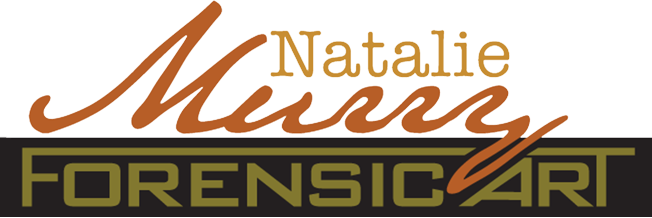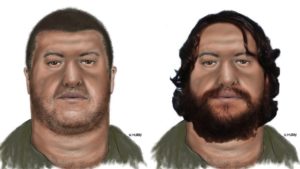I was contacted by a friend of the victim on this Olympia case the other day. He was distressed by my reconstruction of his friend, saying my drawing didn’t resemble Mr. Moore at all. His friend had been a kind-hearted soul and he felt my drawing didn’t show that.
It might be helpful to note that forensic art is not expected to be a portrait of a person, especially when drawn from skeletal remains. I can’t draw someone’s portrait when I’m working from their skull. There’s only so much I can glean from a bone. I also don’t like to draw a victim with a happy expression on their face – I find it disrespectful to show a homicide victim looking cheerful. The only time I draw someone smiling is when they still retain all of their teeth and it would help with identification to show them. I then draw a version of them smiling but also a version without a smile. However, I think showing this side by side rendition shows the difference it makes in just changing a hairstyle.
The left side version is my original drawing. The right side version is the exact same drawing, but with the only change being his head and facial hair matching that of the victim Mr. Moore. I think it makes a huge difference in the appearance of the sketch, and maybe it might make a difference to those who knew him.
Know that the purpose of forensic art is as a tool for detectives. It aims to get people to call in leads on who this person might be. The resemblance doesn’t need to be exact, it only needs to be enough that someone could say, “It might be this guy”. It needs to be enough for someone to call and give a detective a lead to follow when they didn’t have one before. It’s not meant to be an exact portrait, that would be impossible. In fact, the more photographic and exact to one single person it is, the less leads that would get called in.
We do the work to help the cases. Disrespect is never intended.

